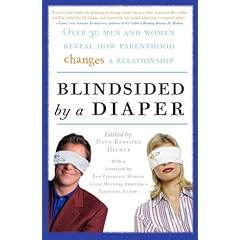make a new habit stick?
Change. What can I write about change? All of us know that change is the only constant in life. Whether we like it or not, it happens. Sometimes change pounces on us stealthily. On the other hand there are also times when we initiate the change. For example, we don't like the image we see in the mirror or we have been falling sick frequently. We decide that it is time to take control of the situation and make some changes in our lives.
I am looking into creating a new habit and started surfing around for inspiration. I am constantly amazed and grateful that one can find almost anything on the internet. So this is what I found on how to make a habit stick. The full article is
here. This is my interpretation of the article and my thoughts on this topic.
1. Commit to Thirty Days The general consensus is that one needs at least 21 to 30 days to make a habit automatic. As such, it is important that you make the commitment to this change by doing it for a month. To strengthen the commitment, write it down and share it with someone.
2. Make it a DAILY affair Consistency is key if you want to make this work. Whether you like it or not, do it because this change is what you desire. If you are not consistent, it is not going to be a habit. Period.
3. Start Simple Avoid being overly-ambitious. Start small. Build on what you have. One day at a time. Be patient.
4. Remind Yourself Review the commitment (refer to 1) whenever you feel discouraged. It is easy to lose the focus. Ask yourself why you want this change. The reasons will keep you going for a little longer. You can also place reminders to perform the action each day. Put it in a salient place, for example on the mirror in the bathroom.
5. Stay Consistent Perform the new habit consistently for it to stick. If you want to eat more healthily, try doing consistently for 30 days. For example, eat yogurt for breakfast for 30 days. Use the same bowl, and eat at the same place and at the same time.
6. Get a BuddyFind someone who is keen on the change. You can keep each other motivated. It also increases the accountability factor. You are more likely to fail yourself rather than a buddy.
7. Form a Trigger Just as an addict has triggers to make him/her feel like using drugs, you can create a trigger for creating a new habit. What is a trigger? It is essentially a cue. One example is always bring a towel when you go for a walk. Eventually that towel will become a cue that it's walking time.
8. Replace Lost Needs Often time people are not aware that when you create a new habit, you are giving up something that has been with you - FAMILIARITY. Familiarity is comforting. As such, it is important that you find something else to replace the needs that you might have lost.
9. Be Imperfect Ah..this is a tough one and I will admit I have the need the be perfect. However this attitude is going to be a stumbling block because let's face it, one cannot be successful immediately at change. It is not that easy. It requires more - persistence, patient and determination. These are good qualities to cultivate. As such, expect difficulties and resistance and not perfection especially in the initial stage.
10. Use “But” Okay, this is new for me. But after reading what the author has to say, it seems to make sense. It is a good way to interrupt bad thought patterns. Shouldn't be too difficult because we tend to use it on a day-to-day basis anyway. Example that the author gave, "I’m no good at this, but, if I work at it I might get better later.”
11. Remove Temptation In the early stage, you should avoid putting yourself to temptations. If you are a recovering alcoholic, you wouldn't want to work at a bar or hang out with friends who drink. Yes, it does mean that you need to make the difficult changes and you may not like them. Liking something is not going to help. This is the time to grow up and accept the situation and do what is necessary to propel yourself towards the goal.
12. Associate With Role Models Spending more time with people who can model the new habits will help to keep you motivated and not give up. There is a reason why Alcoholic Anonymous works. Not only do you find role models, you find people who understand what you are going through.
13. Run it as an Experiment Personally, I think this is a great idea. Just try it out like it is an experiment. Sometimes, we tend to make judgement and avoid the idea even before we try. Thus, withhold judgement until you have been into the new habit for at least a month. Then evaluate and make the necessary changes if need be.
14. Swish Apparently this is a technique from NLP or
Neuro-linguistic programming. This is not an area that I'm familiar with so I won't comment on it. From the article:
Visualize yourself performing the bad habit. Next visualize yourself pushing aside the bad habit and performing an alternative. Finally, end that sequence with an image of yourself in a highly positive state. See yourself picking up the cigarette, see yourself putting it down and snapping your fingers, finally visualize yourself running and breathing free. Do it a few times until you automatically go through the pattern before executing the old habit.
15. Write it Down I am a firm believer in this. When you write something on a piece of paper, it concretizes the intention. Keep this piece of paper and use it as a reminder when you feel unmotivated.
16. Know the Benefits Prior to starting the change, take time to list the pros and cons of the change. Keep that piece of paper. When you find yourself feeling lost, refer to the list to get you going. In particular, keep in mind the benefits of the change.
17. Know the PainOne needs to be aware of the consequences of his/her decision. (Hence the need to list the pros and cons. There are cons to creating a new habit too.) For example, if you decide to train for a marathon, you will have less time for social and leisure activities.
18. Do it For Yourself At the end of the day, this new habit is something that you wanna do for yourself. Avoid putting yourself on a guilt-trip. It is not healthy and helpful.























